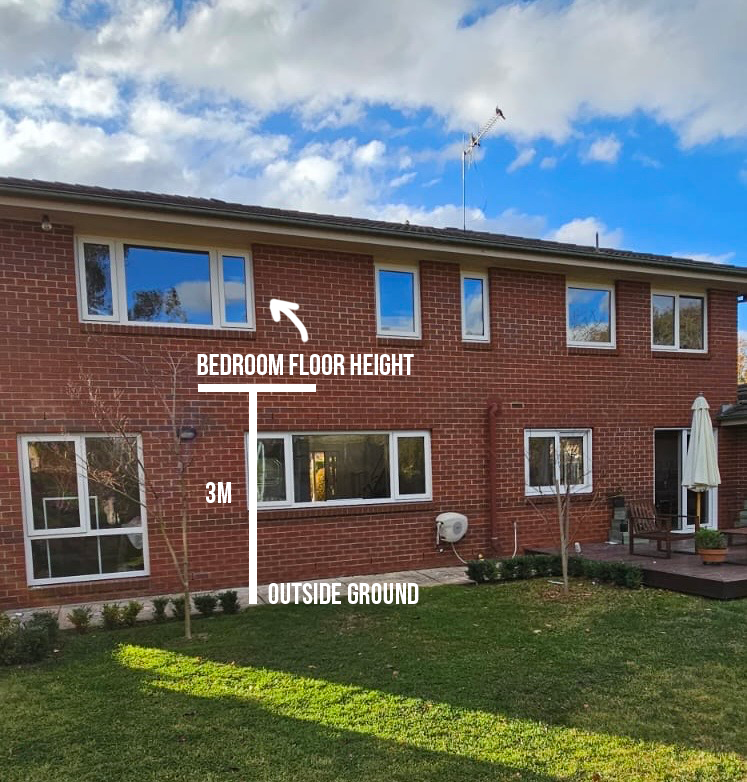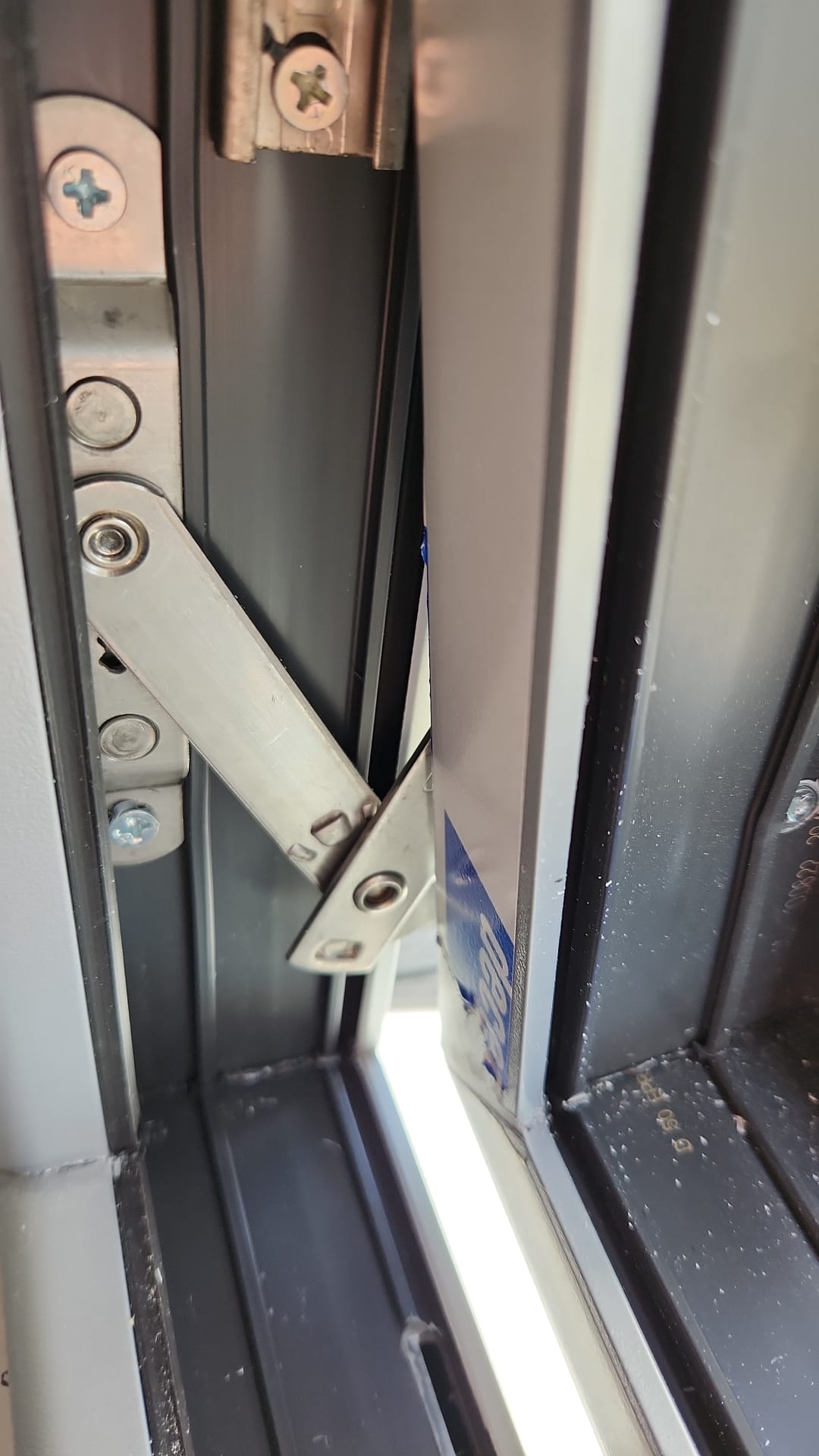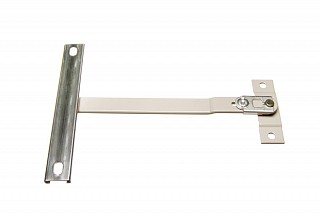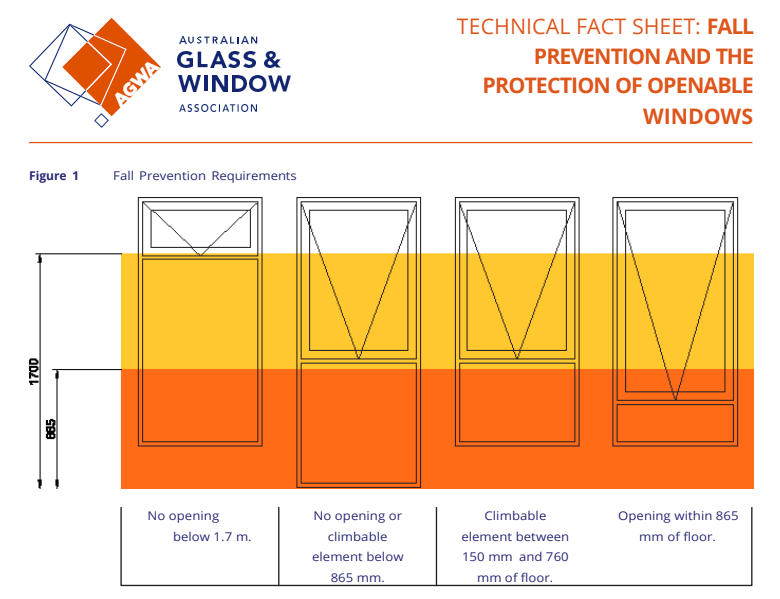Fall Height Prevention
If your home has multiple floors or if the floor height is significantly higher than the ground outside, then your windows may require restrictors to ensure safety if there is not a balcony or balustrade. Restrictors are also required for windows that are near a pool without a safety fence in between. In this blog post, we will explain the National Construction Code requirements for these types of windows and the options you have to comply with these regulations.

Second-story bedrooms that require restrictors
due to being over 2m from floor to ground.
The National Construction Code has set out specific requirements to prevent falls from openable windows. These requirements aim to minimize the danger of anyone, particularly children, falling through an openable window.
There are two categories of requirements:
1. All windows where the potential fall is 4 m or more. (From the floor to the outside ground).
2. Windows in bedrooms of Class 1, 2, 3 and 4 buildings, and any room in Class 9b Early Childhood Centre where the potential fall is 2 m or more. (From the floor to the outside ground).
3. All windows facing the swimming pool area without a safety fence in between, must be fitted with restrictors that limit the opening to a maximum of 100mm.
NOTE: The NSW Strata Schemes Management Regulation 2010 requires protection for windows in any room where the potential fall is over 2 m.
FALL SAFETY OPTIONS
The National Construction Code generally offers two options that are deemed to provide protection. These options include a fixed device that can be attached to the openable part of a window, such as a child-resistant or permanent restrictor, or a fixed screen barrier that can be installed across the openable part of a window.
To ensure safety, any device or screen used to prevent falls from a window must meet the following requirements:
– Any openings in the device or screen must be small enough so that a sphere with a diameter of 125 mm cannot pass through.
– The device or screen must be able to withstand a horizontal force of 250 N applied in an outward direction against the window that it is attached to.
TYPES OF RESTRICTOR DEVICES
Window restrictors are safety devices that limit how far a window can be opened. There are two types of window restrictors available:
Child Resistant means that a key, Allen key, screwdriver, spanner or the coordinated use of two hands is required to open the window beyond 125 mm.
Permanent means that a restrictor or screen is securely fixed in position (eg, a screen pop riveted to the window frame) so it cannot be unlocked, overridden, or is very difficult to remove without, for example, a drill.
A child resistant release mechanism can be fitted so that the restriction may be removed, unlocked, or overridden, provided that:
• the opening is more than 865 mm from the floor and does not have any horizontal or near horizontal elements between 150 mm and 760 mm above the floor that can facilitate climbing. or
• a barrier, no less than 865 mm high, is installed that does not permit a 125 mm sphere to pass through it and does not have any horizontal or near horizontal elements between 150 mm and 760 mm above the floor that facilitate climbing.
See below diagram:

CHILD-RESISTANT
Child-resistant means that a key, Allen key, screwdriver, spanner or the coordinated use of two hands
is required to open the window beyond 125 mm.
PERMANENT
The permanent restriction means that a restrictor or screen is securely fixed in position (eg, a screen pop riveted to the window frame) so it cannot be unlocked, overridden, or is very difficult to remove without, for example, a drill.

Restrictor on an Awning Window


Child Resistant Restrictor

Permanent Restrictor
WHAT DOES A RESTRICTOR LOOK LIKE
A restrictor is a pivoting metal device that attaches from the opening sash frame to the outer window frame. It provides a ventilation opening of 125mm.
WAYS TO AVOID A WINDOW RESTRICTOR
We understand that restrictors may not be the ideal solution for most homeowners as it is preferred to have a wider opening window. To avoid requiring a restrictor there are two options available for windows that fall within the requirements:
1. Order barrier screens for bedroom windows that have a fall height of 4m or other rooms that are at 2m. We recommend these businesses: Alucom or Chief of uPVC. It is best to be ordered to arrive at the same time as the windows so that they can be fitted prior or during installation to avoid requiring scaffolding after installation.
2. Design the bottom of the opening sash to be over 1.7m from the floor when possible (see diagram above).

Barrier screen installed by Chief of uPVC

Example of a design with sashes starting at at least 1700mm from the floor
DO I NEED A RESTRICTOR OR BARRIER SCREEN?
Follow this flow chart to determine what is required in your home:
Our team is available to assist you in determining the type of restrictor required for your multi-level home, or in designing configurations that do not require a restrictor.



